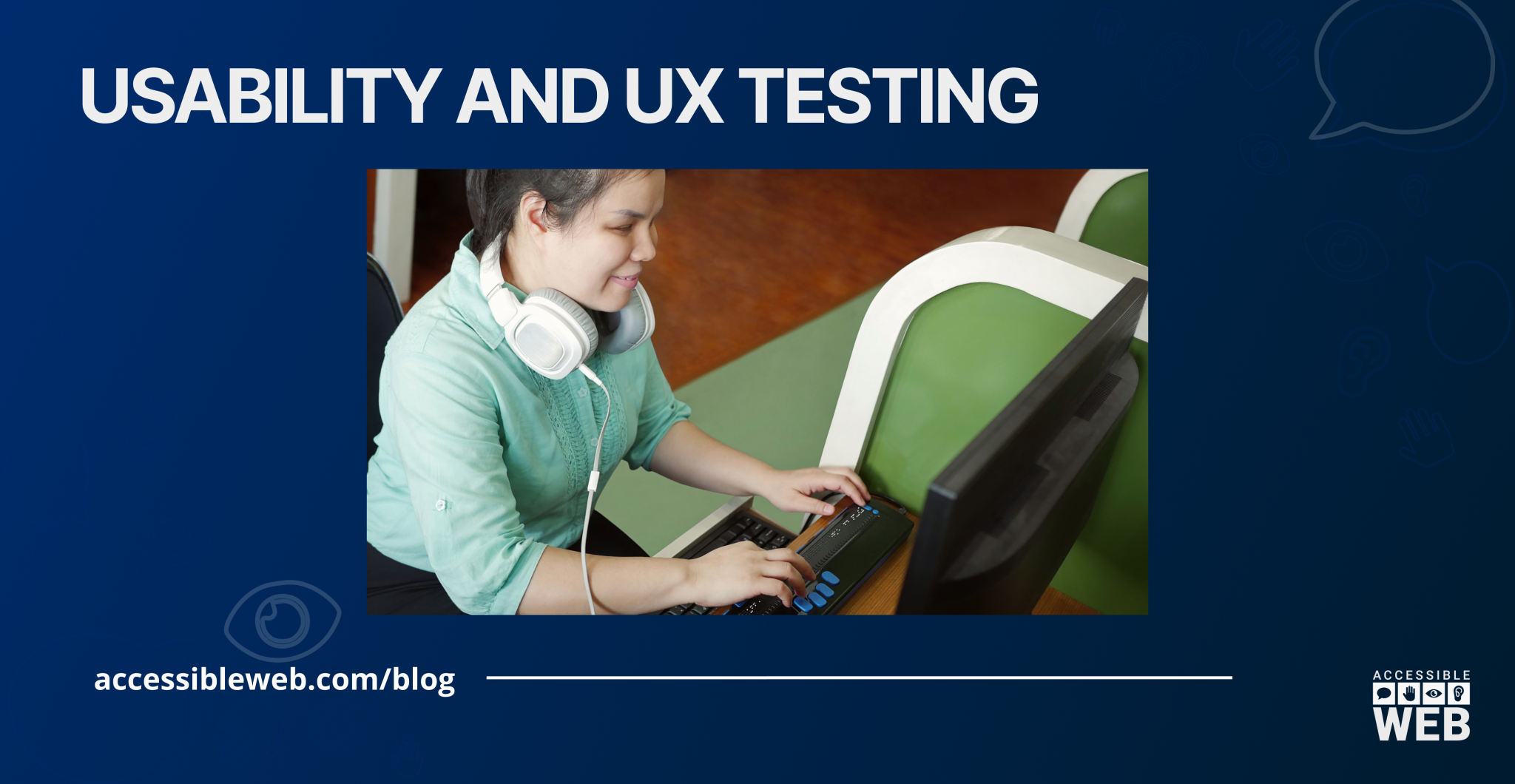
A Case for Usability and UX Testing
“Nothing About Us, Without Us”
If real assistive technology users haven’t tested your website, how do you know it’s truly barrier-free for people with disabilities? You really can’t.
That’s why it’s important to include people with disabilities in your web design and accessibility remediation process. Usability/UX testing is your opportunity to have real users test your website and provide feedback about their experience and any issues they encountered when trying to navigate it.
Why are Usability and UX testing critical for accessible web design?
When it comes to accessibility, listen to people with disabilities. Don’t just take a developer’s word for it.
Usability and UX testing are particularly important when designing accessible websites because people with disabilities have unique user experiences.
Automated scans and manual audits simply can’t replace input from people with disabilities–the true shareholders of your accessibility project. Usability/UX testing, done by real assistive technology users, is, key to ensuring that everyone has a barrier-free experience on your website.
You may be tempted to call it good after completing a manual audit and making any necessary remediations … but wait! Don’t skip over UX testing.
Can iOS Voiceover use this? What does a user journey look like for someone navigating by keyboard control? Will moving elements be too distracting for people with cognitive disabilities?
Usability and UX testing can answer some of these questions.
Assistive Technology
Voiceover/screen readers, keyboard controls, and speech-to-text software are examples of assistive technology–aka technology used by disabled people to help them complete tasks. Blind and visually impaired people often use software like Voiceover or JAWS to read out the contents of their screen. While someone with limited mobility may instead rely on keyboard controls, sip-and-puff devices, and speech-to-text software to use their computer.
To be considered truly accessible, your website needs to be usable with the full range of assistive technologies, and you may be surprised at how many different types of assistive technology are in use.
Common types of assistive technology include:
- Screen readers
- Screen magnification software
- Speech input or speech-to-text devices
- Head-pointers or motion/eye-tracking
- Refreshable Braille displays
- Sip and puff
- Keyboard Control
- Single switch entry devices
- Alternative input devices
Hiring real users of these assistive technologies is simply the best way to ensure your website is truly accessible. Additionally, there are numerous business benefits to conducting this type of usability/UX testing.
Benefits of Usability and UX Testing:
- Identify accessibility issues that might have been missed by automated scanners and during manual auditing.
- Uncover other barriers and areas of confusion to improve overall user experience and ease of use.
- Gain a deeper understanding of how people with disabilities might use your site/product.
- Increase traffic to your site while maximizing ROI by including users throughout the process.
Usability and UX Testing with Accessible Web
Accessible Web is committed to building accessible websites that people with disabilities actually want to use. Usability/UX testing is an invaluable part of our approach to web accessibility. For you, it is your opportunity to include disabled people in your web accessibility process.
Typically, we UX test during the accessibility certification phase of our audit and certification process. We also offer Usability and UX testing as a stand-alone service!
Sources
Overlay Fact Sheet. (2020). Retrieved January 3, 2022, from Overlayfactsheet.com website.